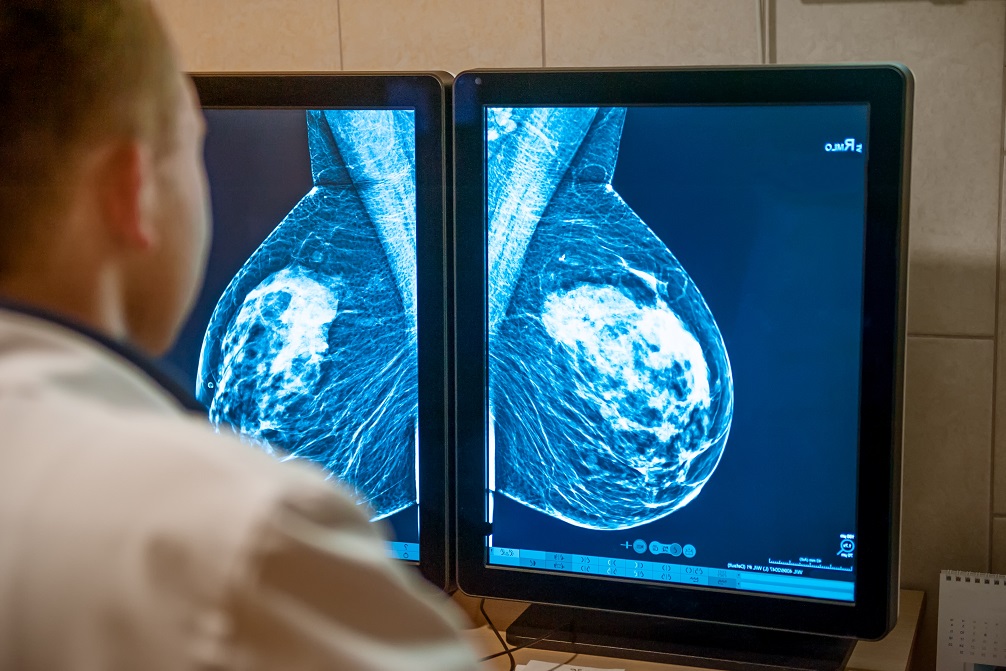AI-Supported Mammography Screening Detects 20% More Cancers and Halves Radiologist Workload
Posted on 03 Aug 2023
Mammography screening for breast cancer has been proven to enhance prognosis and lower mortality by early detection of the disease, enabling timely treatment. However, it is estimated that 20-30% of interval cancers, which should have been detected in the prior screening, are overlooked, and numerous suspicious findings often prove benign. To ensure high sensitivity, European guidelines advise having two radiologists review the mammograms, but there's a shortage of breast radiologists in many countries and it takes over a decade to train a radiologist in becoming proficient in reading mammograms.
Artificial intelligence (AI) has been suggested as a potential automated second reader for mammograms, which could lessen the radiologist’s workload and enhance screening accuracy. The technology has shown promising results in retrospective studies using AI to triage examinations to single or double reading and aiding radiologists in identifying suspicious features to reduce false negative results with the use of computer-aided detection (CAD). However, there has been very less solid evidence from prospective randomized trials to support this. Now, an interim safety analysis of the first randomized controlled trial of its kind, involving over 80,000 Swedish women, has discovered that AI-assisted mammography analysis matches the efficacy of two breast radiologists in detecting breast cancer, without an increase in false positives and reducing the screen-reading workload by nearly half.

In a study conducted by researchers at Lund University (Lund, Sweden;), 80,033 women aged 40-80 years who underwent mammogram screening at four locations in southwest Sweden from April 2021 to July 2022 were randomly assigned to either AI-supported analysis (where a commercial AI-supported mammogram reading system examined the mammograms before one or two radiologists also read them) or standard analysis carried out by two radiologists without AI support. This initial assessment of the Mammography Screening with Artificial Intelligence (MASAI) trial compared early screening performance and screen-reading workload between the two groups.
The minimum clinically acceptable limit for safety in the AI-supported group was set at a cancer detection rate exceeding three cancers per 1,000 screened women. The assumption was that the detection rate might fall as the majority of screening exams would undergo single reading instead of double reading. The baseline detection rate with double reading in the current screening program is five cancers per 1,000 screened women. In the AI-supported analysis, the AI system initially analyzed the mammography image and predicted the cancer risk on a scale from one to ten, with one being the lowest risk and 10 the highest. Images with a risk score below 10 were further analyzed by one radiologist, while images with a risk score of 10 were analyzed by two radiologists.
The system also offered CAD marks to aid radiologists in interpreting mammography images accurately. Women were recalled for further testing in case of suspicious findings. Radiologists made the final decision to recall women and were instructed to recall cases within the top 1% risk, barring clear false positives. AI failed to give a risk score in 0.8% of cases (306/39,996), which were referred to standard care (double reading). The recall rates averaged 2.2% (861 women) for AI-supported screening and 2.0% (817 women) for standard double reading without AI. These were similar to the average 2.1% recall rate in the clinic six months before the trial began, indicating that there was no decline in the cancer detection rates.
Overall, 244 women (28%) recalled from AI-supported screening were diagnosed with cancer, compared to 203 women (25%) recalled from standard screening, resulting in 41 additional cancers detected using AI. The false-positive rate was 1.5% in both groups. In general, AI-supported screening resulted in a cancer detection rate of six per 1,000 screened women compared to five per 1,000 for standard double reading without AI, equivalent to detecting one additional cancer for every 1,000 women screened. Significantly, there were 36,886 fewer screen readings by radiologists in the AI-supported group than in the control group (46,345 vs. 83,231), resulting in a 44% reduction in the radiologists' screen-reading workload.
Although the actual time saved by using AI was not measured in the trial, the researchers estimate that if a radiologist reads an average of 50 mammograms an hour, it would have taken one radiologist 4.6 months less to read the roughly 40,000 screening examinations using AI compared with the roughly 40,000 in the control arm that were double read. The MASAI trial will continue to ascertain whether AI-supported mammography screening reduces interval cancers. The final trial results determining whether the use of AI in interpreting mammography images leads to a reduction in interval cancers in 100,000 women followed over two years, and ultimately whether the use of AI in mammography screening is justified, are not expected for several years.
“The greatest potential of AI right now is that it could allow radiologists to be less burdened by the excessive amount of reading,” said lead author Dr. Kristina Lång from Lund University. “While our AI-supported screening system requires at least one radiologist in charge of detection, it could potentially do away with the need for double reading of the majority of mammograms easing the pressure on workloads and enabling radiologists to focus on more advanced diagnostics while shortening waiting times for patients.”
Related Links:
Lund University














